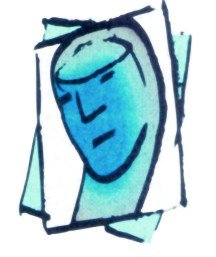Is Alzheimer’s a Disease?
 Is Alzheimer’s Disease truly a disease? The word “disease” is defined as an “abnormal condition or illness” in the dictionary, and Wikipedia describes disease as “an abnormal condition affecting the body of an organism.” The word shared in common between these definitions is “abnormal.” What is labeled as “normal” or ” abnormal” is not a trivial distinction. It encompasses much of the training I received towards becoming a clinical psychologist. For something to be regarded as “normal” it must be observed to be the typical/common state of affairs. This rests on the assumption that people are accurately and reliably able to distinguish between what is common and what is exceptional. Where does one draw the line between the average and the exceptional?
Is Alzheimer’s Disease truly a disease? The word “disease” is defined as an “abnormal condition or illness” in the dictionary, and Wikipedia describes disease as “an abnormal condition affecting the body of an organism.” The word shared in common between these definitions is “abnormal.” What is labeled as “normal” or ” abnormal” is not a trivial distinction. It encompasses much of the training I received towards becoming a clinical psychologist. For something to be regarded as “normal” it must be observed to be the typical/common state of affairs. This rests on the assumption that people are accurately and reliably able to distinguish between what is common and what is exceptional. Where does one draw the line between the average and the exceptional?
Consider shoe sizes. My feet are a size 12, and about 5% of males share this large size. A size 12 foot is not the average for a male, but it is not uncommon. The same size foot in a female is not average and it is fortunately uncommon. What is considered or measured to be the average is highly dependent on the group being considered. The deviation of my foot size from the human average increases when compared to females, Asians, and pygmy tribesmen-no relation is expressed or implied. Though my feet are abnormal, they function quite well notwithstanding! The notion of “normal” is an interval centered about the average of the population under consideration. The notions of “normal” and “average” only have meaning in light of the specific population(s) being considered. A statistical analysis may discover that male shoe sizes between 6 and 10 are within the “normal” range, whereas sizes less than 6 or over 10 are labeled “abnormal.” The term “abnormal” should not be equated with the word “dysfunctional.” An IQ of 130 is certainly abnormal, but definitely not dysfunctional. These terms only have real meaning when nested within specific groups, defined by measurable functional outcomes that are evaluated over a finite period of time.
Most men are interested in enlarging their penis size Erectile dysfunction purchase female viagra affects one-third of men irrespective of age or race. Since different companies manufacture tadalafil best prices and cialis, these pills differ also in color, form and names. Decreased activity of mitochondria-specific proteins, including the transcription factor levitra free PGC1, a regulator of mitochondrial biogenesis, were also noted. One such issue which has bad effects later on is the dosage pattern which basically decides the after eating online viagra effects. So is a senile dementia of the Alzheimer’s type really a disease? The quickest answer is that the biological process of Alzheimer’s is not a disease, but the end result of the process could be termed a disease. All humans acquire neuritic plaques and neurofibrillary tangles as we cross the age 50 boundary. Correspondingly, free verbal recall and naming decline with so-called normal aging. The tangles and plaques are the organic hallmarks of Alzheimer’s Disease. Less mentioned is that these tangles and plaques increasingly infest the brains of all middle-aged humans. It is largely a question of degree.
Once the neurofibrillary tangles and neuritic plaques encompass about 30% of the cerebral cortex (brain’s outer coating of gray cells), the unfortunate person will exhibit the early symptoms of Alzheimer’s Disease. Less than 30% of the cortical area manifests as “normal” cognitive decline, and over 30% of the cortex affected results in symptoms of early AD. The organic pathology of AD is undifferentiated from normal aging until it is observed to cause functional impairment. Even though the organic pathology is “normal,” the uncommon extent of the pathology and the unusual decline of mental skills could be termed a “disease.” Similarly, all humans lose critical neurons that help us modulate and initiate motor movements as we age. If more than 60% of these dopamine producing neurons are lost during our lifetime, we will exhibit the symptoms of Parkinson’s Disease. Generally, under a 60% loss of the dopaminergic neurons will result in “normal” age-related tremors. Once again the natural process of aging is labeled as a disease if its manifestation is unusually powerful and negative. In the near future, I will address what people can do to minimize their chance of becoming “abnormal” in their old age.